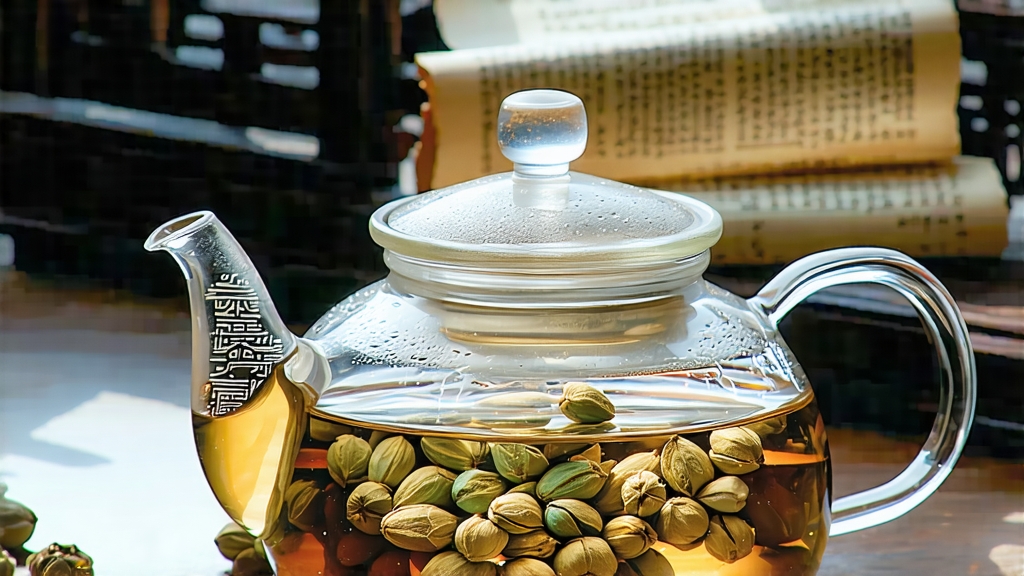
White tea is the quietest child in the Chinese tea family, and within that hush White Hair Silver Needle—Bai Hao Yin Zhen—speaks in the softest whisper yet carries the oldest memories. International drinkers often meet white tea through bagged blends labeled merely “white,” but Silver Needle is the original, aristocratic face of the category: a composition of only unopened leaf buds, still wearing their downy silver cloak, as if the plant never quite agreed to grow up. To understand China’s most minimally processed tea, one must follow the bud back to its coastal cradle, witness the paradox of making tea by refusing to make it, and finally taste the liquor that moonlight supposedly left behind.
-
Historical roots: from imperial tribute to cold-war relic
The first written record that can be confidently linked to Silver Needle appears in the 1796 edition of the Fuding County Gazetteer, noting that “downy buds were sent to the capital as spring tribute.” At the time the buds were simply sun-dried; the concept of “white tea” as a distinct processing category had not yet crystallized. When the Tongzhi Emperor tasted the infusion in 1875 he is said to have remarked that the floating buds looked like “needles of frost suspended in liquid jade,” giving the tea its poetic name. Export began through Fuzhou’s treaty port in 1891, and by 1915 Silver Needle won a gold medal at the Panama-Pacific International Exposition in San Francisco, suddenly turning a regional tribute into a colonial-era luxury. During the 1960s the state requisitioned entire crops to barter for Soviet machinery, so for two decades almost none remained inside China; domestic tea lovers rediscovered it only after economic reforms in the 1980s. Thus the same bud once toasted by emperors, commissars and San Francisco socialites now rests in your teacup, a quiet survivor of dynastic, republican and communist storms. -
Terroir: why Fuding and Zhenghe taste like different seasons
Authentic Silver Needle comes only from Fujian province, but even within Fujian two micro-regions argue over the soul of the tea. Fuding, on the rugged coast, sits at 27°N latitude where marine fog slows photosynthesis, creating buds that are plump, amino-rich and famously sweet. The cultivar native here—Fuding Da Bai Hao—has the largest bud volume of any Camellia sinensis variety, yielding the dramatic “silver” appearance. One hundred kilometers inland, Zhenghe county sits 400 m higher; cooler nights and iron-rich lateritic soil produce a smaller, more aromatic bud that leans toward orchid and honey. Tea historians often frame the difference as “Fuding = cream, Zhenghe = perfume.” Both are protected under China’s National Geographical Indication, yet each offers a seasonal dialogue between oceanic softness and mountain clarity. -
Plucking calendar: the bud that arrives before the sparrow
The pickers’ rule is brutally simple: only the unopened leaf bud, no stem, no second leaf, harvested for barely ten days each early spring when the bud length reaches 2.5–3 cm but before the first true leaf unfurls. Experienced eyes watch for the moment when the down turns from pearl-white to silvery-grey; miss three days and the bud lignifies, ruining the signature velvet mouth-feel. Because the tea is picked earlier than any other Chinese variety—usually around Qingming festival when night temperatures can still drop to 8 °C—pickers work dawn to 10 a.m., finishing before the sun evaporates the dew that will later act as a natural moisturizer during withering. It takes roughly 30,000 buds to yield one pound of finished tea, the hand-weight of a small sparrow. -
Crafting by not crafting: the art of doing nothing slowly
Once baskets of buds arrive at the two-story wooden factory, processing is minimal yet obsessively controlled. The buds are spread one layer thick on bamboo trays stacked like drawers in open-air lofts. For 36–48 hours they are left to wither under a choreography of wind, humidity and indirect sun. Masters call this “letting the tea commit suicide slowly,” meaning enzymatic oxidation is allowed to creep in just enough to mellow grassiness but halted before true oxidation turns the bud into black tea. No rolling, no pan-firing, no kneading—only a